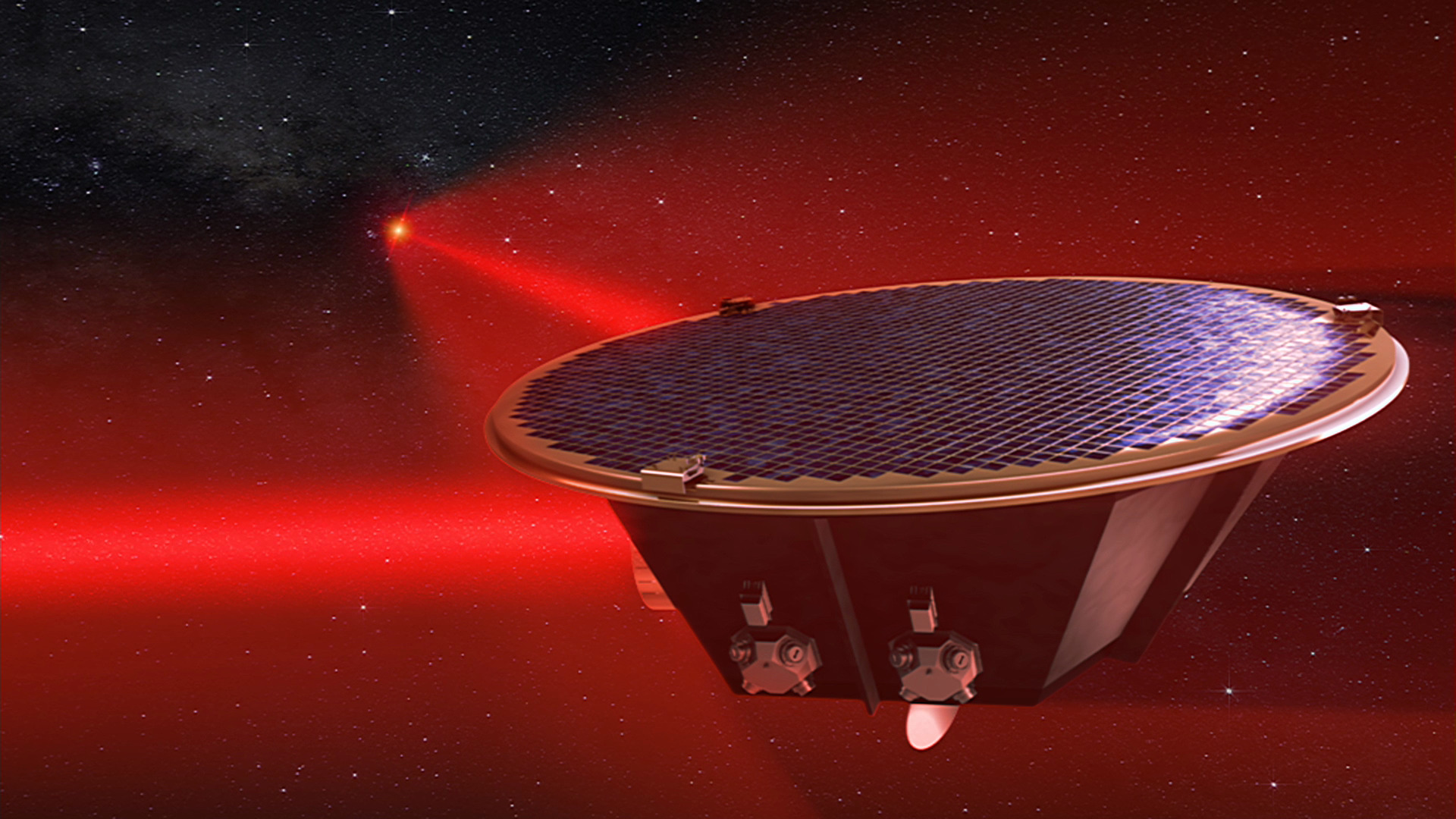The ILIADA project, selected in the call to test technology on board the next satellite mission of the NewSpace Strategy

Caption: The ILIADA project will implement a first version of sensors for the LISA mission, which will detect gravitational waves in space using three spacecraft flying in a triangular formation. Lasers fired between the satellites will measure how gravitational waves alter their relative distances.
Credits: AEI/MM/Exozet
Last February, the Government of Catalonia and the Institute of Space Studies of Catalonia (IEEC — Institut d’Estudis Espacials de Catalunya) opened the call for the selection of the payload as an in-orbit technology demonstrator (IOD) to be embarked on the new Earth Observation satellite mission. This mission will give continuity to the Menut mission in the framework of the NewSpace Strategy of Catalonia, promoted by the Government of Catalonia with the collaboration of the IEEC, the i2CAT Foundation and the Cartographic and Geological Institute of Catalonia (ICGC).
The call aimed to offer the opportunity to companies, organisations or research centres based in Catalonia to present one of its innovative technologies to integrate it into the platform of this new satellite, with the aim of validating it in orbit, accelerate its introduction into the market or demonstrate additional capabilities.
After analysing all the applications received, the evaluation committee appointed by the Government of Catalonia and the IEEC has decided that the proposal IN-ORBIT LISA DIAGNOSTICS DEMONSTRATOR (ILIADA) will have the opportunity to integrate and fly on board the next microsatellite that will provide the fourth mission of the NewSpace Strategy of Catalonia to try to achieve the technical and scientific objectives it has proposed.
The ILIADA project will implement a first version of the Scientific Diagnostics Subsystem (SDS) sensors, the Spanish contribution to the LISA (Laser Interferometer Space Antenna) mission of the European Space Agency (ESA), which will put a gravitational wave observatory in space for the first time, as well as innovative sensor concepts developed in the IEEC framework. Through the use of high-precision magnetometers and the on-board radiation monitor, ILIADA will attempt to detect the electric currents that align with the Earth’s magnetic field lines as they pass through the poles. These measurements are used to better understand how our magnetic field is generated and can provide new insights into space weather, i.e. the real-time measurement and analysis of the set of physical properties of the Sun, the interplanetary medium, the magnetosphere, the atmosphere and the Earth’s surface that are influenced, directly or indirectly, by solar activity. Understanding space weather is important because of the impact it can have on our infrastructures, technology, society and health.
The ILIADA project is led by researchers and members of the IEEC at the Institute of Space Sciences (ICE-CSIC), with the collaboration of the Institute of Cosmos Sciences of the University of Barcelona (ICCUB) and the Universitat Politècnica de Catalunya – BarcelonaTech (UPC). Specifically, the groups involved are the following: Gravitational Astronomy – LISA (CSIC), Micro and Nano Technologies (UPC), the Technological Unit – instrumentation division (UB), and the Centre for Space Studies and Research – CERES, together with the engineering group 3Cat-Gea (IEEC).
You will find the official resolution of the award in the following link:
